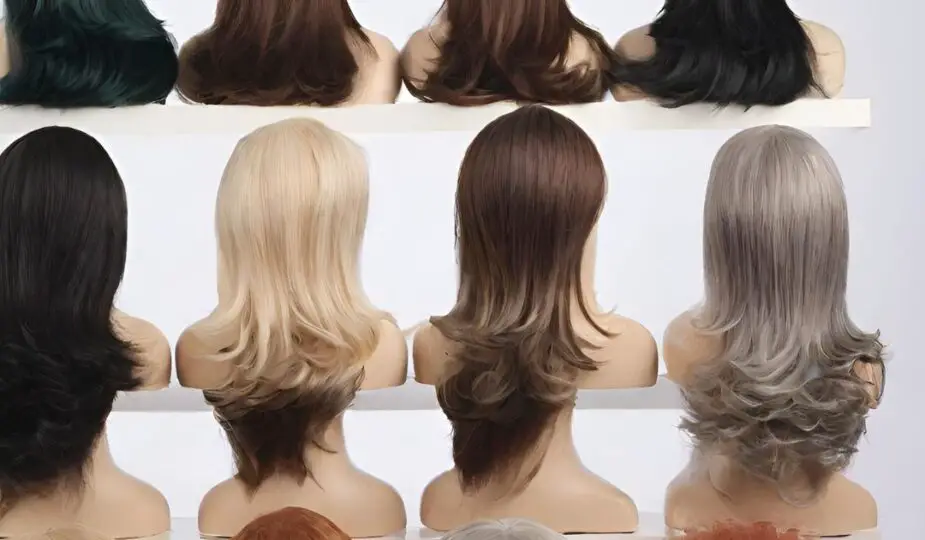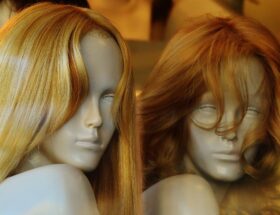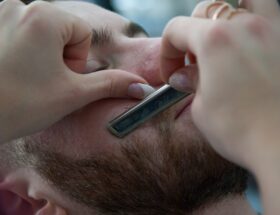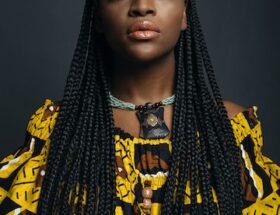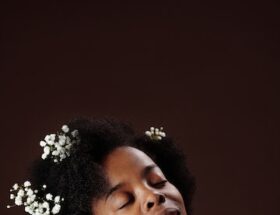Any hair enthusiast will tell you that choosing the best wig density determines how the hairstyle looks on you and blends with your hair or scalp. So, what does wig density mean?
Wig density refers to the thickness or concentration of hair fibers on a wig cap, typically measured in hair strands per square inch.
As such, wig density is crucial in determining the wig’s overall fullness and natural appearance. A higher wig density indicates a thicker, fuller wig, resembling natural hair more closely, while a lower density results in a lighter, more breathable wig. Let’s discuss wig density types below.
How to Classify Wig Density
Wig density is classified based on the number of hair strands or fibers on the wig cap per square inch. Here’s a more detailed explanation of how wig density is typically categorized:
Low Density (80% to 100%)

Such wigs have fewer hair strands per square inch, usually around 80% to 100% of the natural density. Therefore, these wigs are ideal for individuals who prefer a lighter, more breathable option. They can be a great choice for those with thinning hair or who want a more natural, relaxed appearance. Low-density wigs are more comfortable for daily wear and less likely to look bulky or artificial.
Medium Density (100% to 130%)

Most standard wigs fall within the medium-density range, featuring 100% to 130% of the typical natural hair density. These wigs are between fullness and realism, making them popular with a wide range of wearers. Notably, medium-density wigs have a natural appearance without being overly dense, making them versatile for various hairstyles and occasions.
High Density (130% and above)

Wigs with high density have more hair strands, usually exceeding 130% of natural density. They offer a lush, voluminous appearance and are suitable for achieving glamorous, full-bodied styles. Hence, high-density wigs are favorable for special occasions or when a dramatic look is desirable. However, they can be heavier and warmer to wear compared to lower-density options.
Extra High Density

Some wigs, particularly for theatrical or extravagant purposes, may have an extra high density. These wigs contain an abundance of hair strands, far surpassing natural density levels. Extra high-density wigs are popular in theater, film, cosplay, and some fashion-forward settings where an exaggerated and bold look is required.
How to Choose the Most Ideal Wig Density
Wig density impacts the overall appearance and look of the wig. Here’s how to choose the most suitable density for your look.
Target Naturalness
The density of a wig plays a crucial role in determining how natural it appears. Wigs with low to medium density, which closely mimics the density of natural hair, often look the most realistic. They create a more subtle, believable appearance, as they don’t appear overly full or heavy.
On the other hand, high-density wigs can sometimes look too thick or wiggy, especially if the wearer is trying to emulate a more natural hairstyle.
Compare Volume and Fullness
Wig density directly impacts the volume and fullness of the hairstyle. High-density wigs provide a voluminous and lush appearance, perfect for creating glamorous or statement hairstyles. They offer plenty of styling options, including intricate updos and elaborate curls.
In contrast, low-density wigs have a more subdued, lightweight feel and are better suited for simpler, everyday looks.
Settle for Comfortable Wigs
The density of a wig affects its weight and breathability. Low-density wigs are generally more comfortable for extended wear because they’re lighter and allow better airflow, reducing the risk of overheating. High-density wigs, while providing a luxurious look, can be heavier and may cause discomfort during extended use, especially in warm weather.
Consider Your Styling Versatility
The choice of wig density impacts how easily you can style the wig. High-density wigs offer more versatility when it comes to creating elaborate and voluminous styles. They can hold curls, waves, and various intricate designs with ease. Low-density wigs are typically better for more straightforward, natural looks, as they may not hold complex styles as effectively.
Face Shape Matters
The ideal wig density can vary depending on the shape of your face. High-density wigs can add balance to round or square faces by providing more volume at the crown. Conversely, lower-density wigs can suit oval or heart-shaped faces, as they create a softer and more natural frame for the face.
Match the Occasion and Intention
The density of a wig should also align with the purpose and occasion. High-density wigs are suitable for formal events, parties, or theatrical performances where a bold, dramatic look is desirable. In contrast, lower-density wigs are better for everyday wear or situations where subtlety and comfort are a priority.
Conclusion
When selecting a wig, consider your style, comfort, and the look you want to achieve. Different densities cater to varying preferences and needs. It’s also important to note that wig density may vary in different areas of the wig.
For example, a wig may have a higher density at the crown for added volume, while the sides and back might have a lower density for a more natural appearance. Ultimately, the choice of wig density should align with your individual preferences and the hairstyle you wish to create.
FAQs
Is 180 density good for a wig?
It depends on personal preference and the look you want to achieve. Nevertheless, 180% is a medium density, providing a balance between thickness and natural appearance. If you want a fuller look without excessive volume, 180% density can be a good choice.
What is a good density for a wig?
The ideal density for a wig varies from person to person. Typically, 130% to 150% density is a more natural density for a realistic appearance.
Is 200% density good for a wig?
200% density is on the higher side and will create a full and voluminous look. If you want a thick and lush appearance, 200% density can be a suitable choice. Remember that very high-density wigs can be heavier and potentially less breathable.
Between 180 or 250% density, which is the best for a wig?
180% density offers a balanced, medium-full look, while 250% density is significantly thicker and denser. If you prefer a dramatic and voluminous style, 250% density might be suitable, but it can feel heavier and warmer.
Is higher density for wigs better?
Higher-density wigs (e.g., 200% or 250%) provide a fuller and thicker appearance, ideal for certain looks. However, they may also feel heavier and warmer on the head. It’s essential to consider both aesthetics and comfort.

